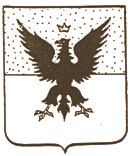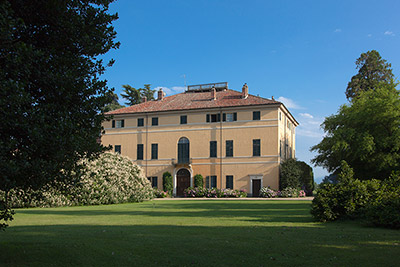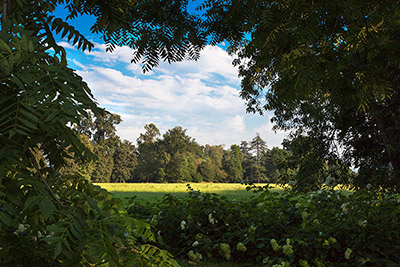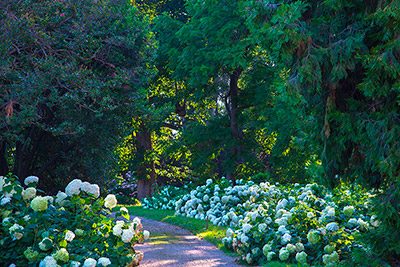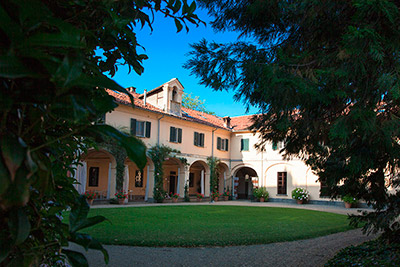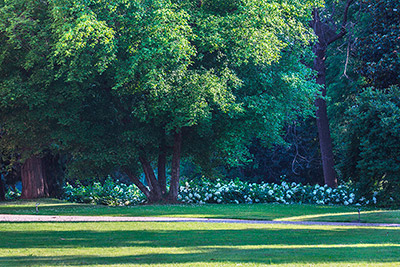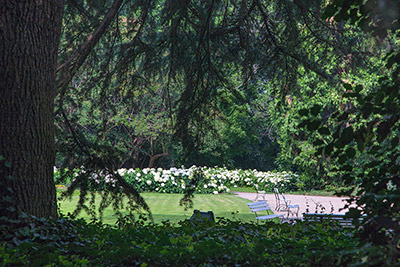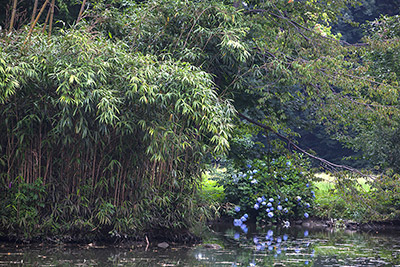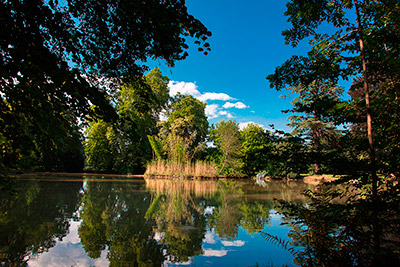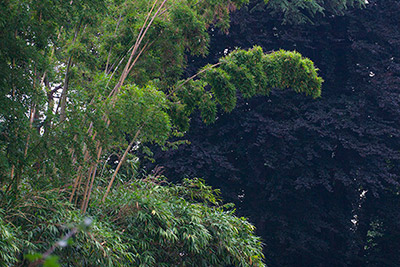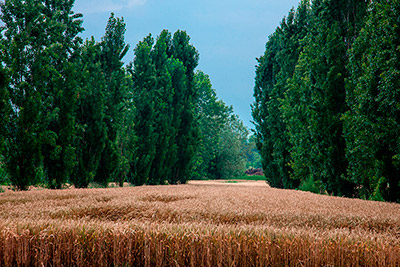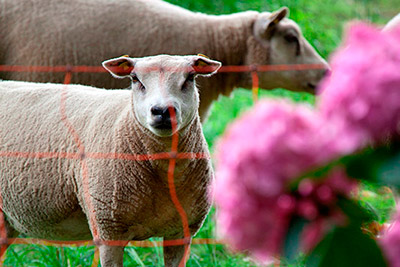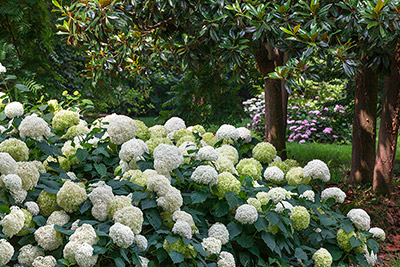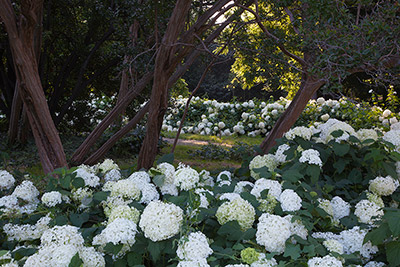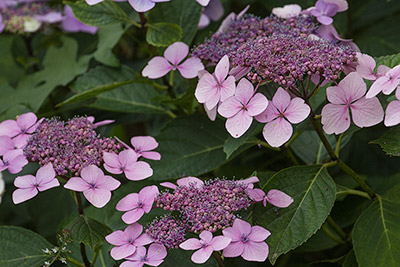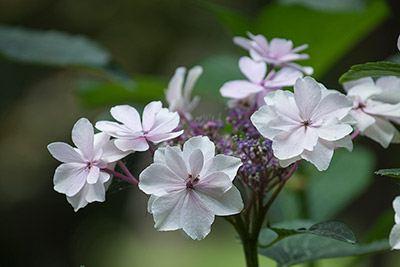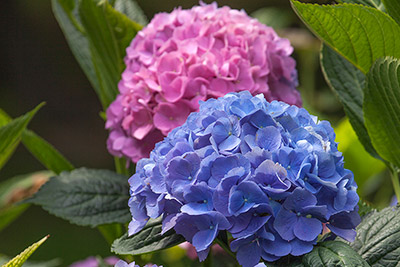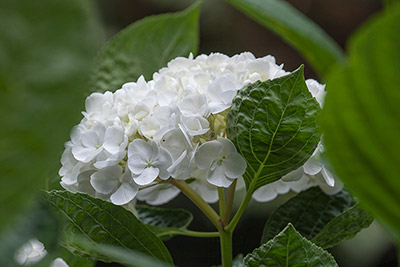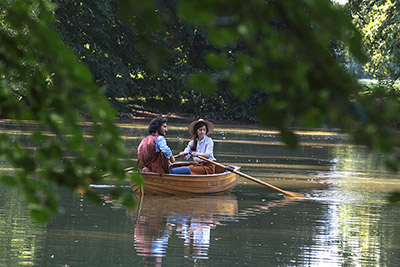-
Il Torrione
The abode is situated in one of the largest parks in Piedmont and its present appearance is the fruit of measures taken from the beginning of the 19th century to renovate the building. The works which took place covered a wide area and the aim was to separate the residence from the medieval farms. It was a big project which over time was commissioned by the various owners and involved many architects. The works which took place are documented and the architectural designs drawn up by the architects Ignazio Michela, Mainoni, Clerichetti and the German landscape gardener, Xavier Kurten are conserved in the archives.
Il Torrione estate was first noted in the Middle Ages and a drawing by Bertino Rivetti, dated 1558 shows an embattled tower. This was surrounded by walls with circular towers and there was also a chapel. In the basement of the present building the sloping walls of the medieval tower can still be seen.
In the 16th century the ownership of the property passed from Renato di Challant to Gladio de Cordone and eventually to the Trucchietti family, each in turn they made the estate more productive. In the middle of the 17th century the estate passed to the counts Canera di Salasco and over the next few centuries it was they who made the many changes that made the building what it is today. In 1856 Marquis Leone Doria Lamba of Doria’s family from Genova bought the property and during the reign of Carlo Alberto decorations and embellishments were added to make the building more refined. The hallway was decorated with 17th century style pilasters and arched niches which can still be seen today. Above the hallway an ovoid ballroom was built, it has a marble mosaic floor which was designed by the architect Pelagio Palagi. In an adjacent room there are archways which have been decorated with mythological subjects.
TopThe Park
A drawing dated 28th March 1835 and signed in Racconigi by Kurten not only gives us an idea of how the park was to be developed but it also shows us what the residence looked like at the time when it was undergoing many changes. Today there is a main building surrounded by gardens and a large park. The park area stretches from the south of the building towards a saut de loup (ditch) which marks the border of the property. The aim was to give a wonderful view of the countryside towards Chisone which would have been interrupted if a boundary wall had been built. Other plans of the park were drawn up by Xavier Kurten and among these is the project for the Celtic temple which was to be built by the lake and also the plans for the gamekeeper’s house. Today the lake area is home to a delightful family of geese.
The park, like many of Kurten’s projects for the court of the House of Savoy and for the nobility of the realm, follows the English romantic vision. Nature has been “recreated” to enhance the beauty of the natural environment and leave open spaces through the woods, which were planted 180 years ago, so as to enhance the views. In front of the main building there is a large green area where a flock of Texel sheep graze. The woodlands which surround the park are crossed by pathways and from these shortcuts visitors can enjoy the views.
Many of the trees in the park are ancient, there are big oak trees, horse chestnuts, plane trees, Austrian pines, ash trees, white cedars, biloba gingko, cypress trees, magnolias, poplars, hornbeams, tulip trees, cedars of Lebanon, hortensias and Diospyros Virginiana (American kaki, over 20m high). Recently holly bushes and bamboo have also been planted and – in the words of Paolo Pejrone – the “light, brush strokes of groups of white hortensia”, Hydrangea arborescens, ‘Anabelle’ brighten up the shaded areas while the H. ‘M.me Emile Mouillière’ enhance the areas which are closer to the residence.
To the north of the main building the plan of the park becomes more formal with large, elliptical lawns on either side of a tree-lined avenue of hornbeams which is shown on the designs of Kurten and which reaches the entrance of the main building and the family chapel where over the centuries all of the family events took place.The park Il Torrione is a large Italian garden.
TopThe Villa
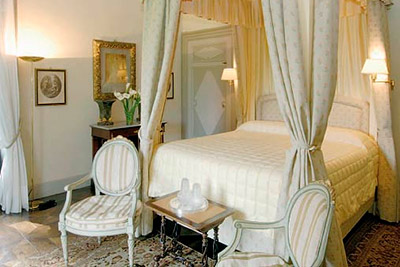
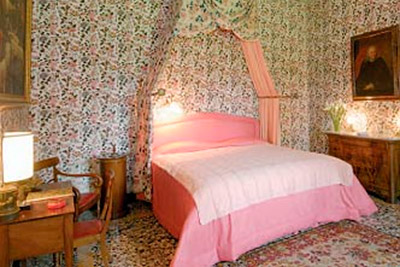
Inside the Villa they are two elegant suites at guest’s disposal: Luigi XVI and the Venetian. These are exclusive rooms that combine the beauty and richness of the furniture to the most modern comforts.
For prices and conditions, contact us for a quote.
TopXavier Kurten
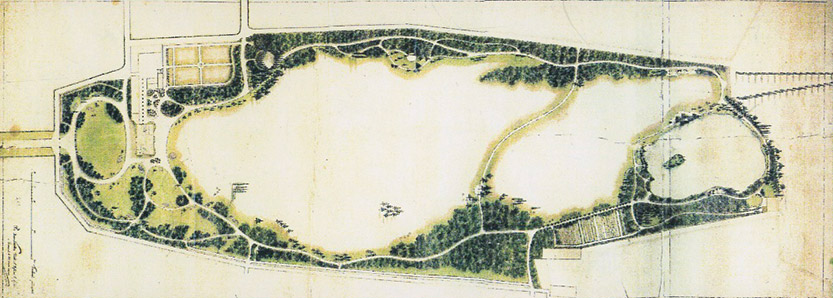
Born in Bruhl, near Cologne, towards the end of the eighteenth century, Xavier Kurten, spokesman of the romantic spirit, introduced the taste for English gardens, which was already deeply entrenched throughout Europe and particularly in England, in Piedmont. The classic French model, hitherto dominant and tied to sceneries based on the axial perspective, was thus replaced with a taste for the art garden: nature contrasting symmetry and axiality were replaced by an apparently “spontaneous” combination of architectures and trees to embellish and enhance the area. The garden became a path made up of sequences of scenes carefully studied and created to evoke emotions.
During his years in Piedmont (1812-1840), Kurten designed many gardens, four Savoy owned (parks attached to the Castles of Racconigi, Govone, Agliè and Pollenzo) and several belonging to several noble families Piedmont, including memo Il Torrione in Pinerolo.
Kurten's hallmarks include the variety and quality of plants, carefully chosen for each point of the composition; groups of trees in a circle, large expanses of lawns visible walking along the trails connected by numerous cross paths and the irregularly shaped lake with islet. There are, in his designs, dense shadows and paths surrounded by vegetation that awaken “a sweet emotion, a peaceful and lasting pleasure” (Ercole Silva).
His collaboration with the architect Ernesto Melano and the sculptor and architect Pelagio Palagi, active at the court of King Carlo Alberto, led Piedmont cultural environments to move closer to European tastes, in which romance was the dominant phenomenon and attention to garden art its direct manifestation.
TopHortensias
Hydrangea, commonly known as hortensias, grow in their natural state in both Asia and the Americas.
In Asia, Japan is the country where most of the species and cultivars of H. macrophylla and H. Serrata originated. There are also numerous species from China and Tibet.
The species H. arborescens, H. quercifolia and H. radiata originated in North America. The only hydrangea native to Mexico is H. Semannii.Hydrangea are woody shrubs, whose skin flakes off with age. The majority are upright, among them the biggest can reach a height of a dozen metres, the smallest not even a meter.
The leaves, generally deciduous (with the exception of H. Semannii) are always opposite. In actual fact, the flowers are inflorescences formed by fertile flowers in the center and sterile flowers along the outer edge. The first are small, the second bigger and more striking, thanks to the more developed colored sepals. The inflorescences may be flat or panniculus spherical in shape. In nature, the majority of species have flat inflorescences, with a majority of fertile flowers. However, horticultural varieties typically have a globular shape with a majority of sterile flowers.Hydrangea colours range from blue to red, including all intermediate shades, from lightest to darkest, but there is neither yellow, nor orange. White is the result of the absence of pigments and, when there is a slight presence of chlorophyll, it can become ivory or greenish.
Color varies depending on the acidity of the soil: in a very acidic soil the flowers will be blue, in a less acid, a shade of purple or mauve. In fact, it is the acidity of the soil that is tack pigments toward blue, but the aluminum that can be assimilated by the roots only in the presence of soil acidity. In nearly neutral soils, the colors will be pink or red.
ANNA PEYRON NURSERYTopInformation and initiatives
The Park is open every day from April to October: 10am – 12am / 3pm – 6pm
Admittance: € 6 – Free for children under 10 years.
Guided tours for groups (minimum 20 people) on request. Booking compulsory. Admittance: € 10,00.For information on events and initiatives and to receive the newsletter just send an email to: info@iltorrione.com and prenotazioni@iltorrione.com, with the subject “Request initiative updates”. During the year you will find all the information on special initiatives and special openings on our Facebook page.
Historical Abode Il Torrione
"Maison d’Hôtes"
Via Galoppatoio 20, Pinerolo (Torino)
Information and booking: Tel: +39 0121 322616 - Fax: +39 0121 323358
info@iltorrione.com - prenotazioni@iltorrione.com




